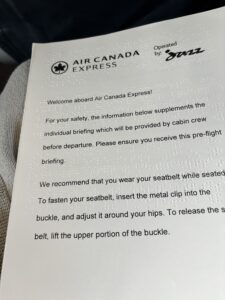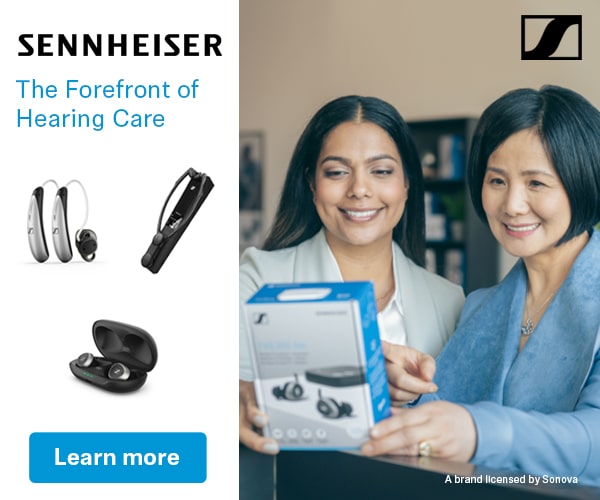(Note: This is a longer-ish article, but it’s not boring and contains important stuff. Also, HoH means hard of hearing, a person with hearing loss.)
A couple of weeks ago, I did something I swore I’d never do. I allowed myself to be pushed through the airport in a wheelchair even though my ability issue is profound hearing loss.
I can walk. I just can’t hear very well – especially in a noisy airport with unintelligible public address announcements and gate change or boarding announcements that don’t always appear in a timely manner on my smartphone.
I had never understood why, when self-identifying with hearing loss when boarding a flight, there would often be a wheelchair waiting for me at the other end. Which I always refused. Once, a young airport staffer was distressed by my refusal and followed me through the terminal, with the wheelchair, to make sure I reached the gate of my next flight.
Recently I learned why the airlines provide a wheelchair for any disability. There is no code that says, “passenger needs someone to help in navigating the airport because of hearing loss”. Everyone gets a wheelchair.
But I didn’t know this when I arrived at the airport in Atlanta, where I’d been attending the American Academy of Audiology convention with my co-author Shari Eberts. I was due to present the next day at another conference, in another country. I was flying to Edmonton, Canada via Toronto, and the timing was very tight. Every plane on my trip had to leave and land at the scheduled time, if not earlier. To make it worse, I had a terrifyingly short connection in Toronto, where I had to pass both security and Canadian customs to reach my next flight. If I missed it, I would not be able to keep my commitment to present at 9am the next morning.
I had been worrying about it for days.
Checking in at Atlanta, staff already knew I was DEAF – that’s how it read on my boarding pass – and offered me a wheelchair. Because, you know, I was DEAF! They may also have seen my tight timelines.
“Oh gosh, I can walk,” I replied. The two staff members gave me a look that I translated as, “So what?”
I said, “Do you think it’s OK, I mean, I travel on my own all the time, and usually, I just take advantage of early boarding. You really think it’s OK?” I felt like a nervous first-time passenger rather than the seasoned traveler that I’m supposed to be.
They both said yes, do it, and I agreed, partly because it would be a new experience and I am, after all, a writer about the hearing loss life.
I was directed to a nearby spot where a staffer oversaw a small fleet of wheelchairs. She welcomed me warmly and invited me to pick a chair I liked, and I’d be retrieved in a minute.

Me, in chair, documenting my discomfort.
A charming young man came and packed my gear around me. He chatted to me as he pushed. I explained I couldn’t understand him, so he simply motioned what he wanted me to do.
We wheeled to the front of the security line and my embarrassment grew. He put my gear on the scanner conveyor belt and then, the moment I dreaded. I had to stand up and walk through the body scanner, in full view of other people. My guy met me on the other side, made me sit back down and as I did up my running shoes, I saw a gentleman leaning over painfully to do the same thing. Except that he got up and walked slowly with a cane out of the security area. It was the low point of my journey.
As you might guess, I boarded the plane first, using my own legs. I gave the flight attendants my usual information: “I have profound hearing loss, I speechread, and I can’t understand overhead announcements. You don’t need to come and tell me about our cruising altitude or the weather at destination – just the important stuff like if there’s turbulence ahead, if we’re going to be late for some reason, and if I need to assume, you know, crash position.”
 On this Air Canada flight, the staff was wonderful. Before taking off, an attendant crouched down beside me to ensure I had everything I needed, a Braille card, perhaps? I just looked at her and she laughed, realizing her mistake. But she did bring me a Braille card that also contained written instructions in my language. Brilliant!
On this Air Canada flight, the staff was wonderful. Before taking off, an attendant crouched down beside me to ensure I had everything I needed, a Braille card, perhaps? I just looked at her and she laughed, realizing her mistake. But she did bring me a Braille card that also contained written instructions in my language. Brilliant!
Landing in Toronto, a staffer was waiting with a wheelchair. I said, “I’m too embarrassed. I can walk, I just can’t hear!”
She said, “Shall I walk with you, then?”
She cleared up the mystery – there was no computer code for walking assistance. I was accompanied all the way through Customs and eventually to my gate – which she hadn’t been able to find. The gate had been moved to a difficult spot; I would never have found this on my own. I couldn’t understand the overhead announcements, and the usual notice of gate change came through on my phone only after I was sitting in my seat.
I frequently travel alone for speaking engagements, and I thought I knew the ropes. But after this trip, I understand the system better. While I will never use a wheelchair again (unless I truly need one), I am grateful for all the compassionate assistance I received.
But I need to reiterate a common and valid complaint of travellers with hearing loss; we wish airlines and staff better understood our communication needs. And while some (not all) inflight movies are captioned, we need ALL inflight announcements be captioned instead of just seeing this unhelpful information: “Passenger Announcement”.







